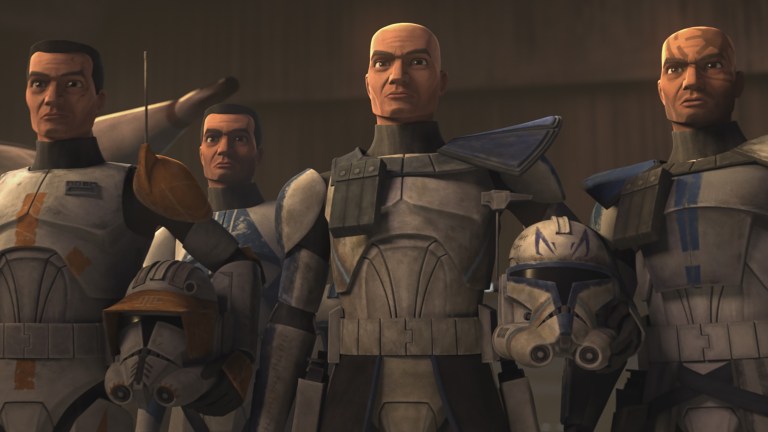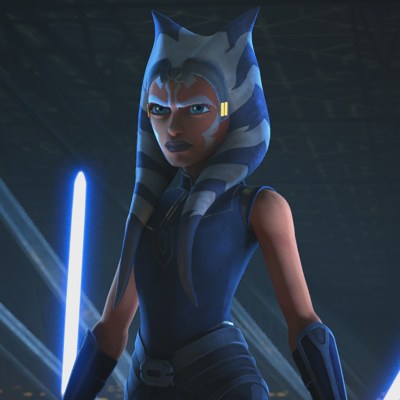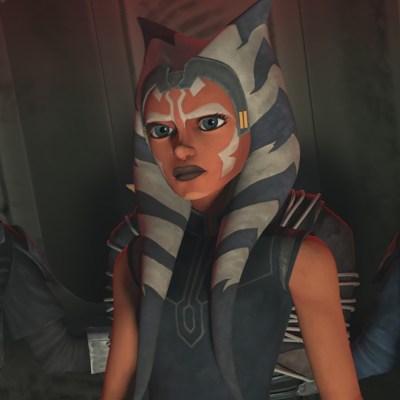Star Wars: The Clone Wars Season 7 Episode 12 Review – Victory and Death
The Clone Wars series finale is an exciting conclusion to Ahsoka Tano and Rex's Prequel era stories. Read our final review of the Star Wars animated series.

This Star Wars: The Clone Wars review contains spoilers.
Star Wars: The Clone Wars Season 7 Episode 12
Let’s be frank: The Clone Wars isn’t over. There’s a new short story collection, The Clone Wars: Stories of Light and Dark, coming in August. Nevertheless, we’re living in a week of great Star Wars TV just as a lot of viewers are looking for an escape. And even if I’m too cynical to call this the end, The Clone Wars animated series does feel complete. Despite the fact that the real finale of the Clone Wars happened in Revenge of the Sith in 2005, “Victory and Death” is a masterful example of the exciting adventure and heart of Star Wars. The finale doesn’t quite have the momentum of “Shattered,” but it sure does deliver.
Ahsoka and Rex struggle to escape the Republic cruiser during Order 66. That’s the long and short of it: “Victory and Death” is an episode-long chase sequence, and that’s one of the great things about it. Ahsoka’s signature lightsaber style whirls beautifully, and there were so many moments where I gained a new appreciation for her particularly acrobatic style. Ahsoka has incredible spatial awareness. The Force probably helps.
Maul’s one big combat scene is also a ride, a power fantasy a la The Force Unleashed or the original Clone Wars miniseries, as he tears the hyperdrive out of a capital ship while in lightspeed. The former Sith lord still doesn’t have a lightsaber and is walking toward armed clones like he’s already seen them dead on the floor. His expression throughout the episode gives the impression that he knows this is the coolest thing he’s done in a while.
About 10 minutes into the episode I was beginning to wonder what the structure would actually be. There were so many potential pitfalls: would the ship crashing feel like a repetition of the opening sequence from Revenge of the Sith? Would Ahsoka’s role feel too precious, the canon warping further to allow her to succeed where most other Jedi failed? How would the show possibly create a satisfying finale in such a short runtime?
Stream your Star Wars favorites on Disney+ with a FREE TRIAL, on us!
The repetition is still there, but I began not to worry about it for two reasons: the relationship between Ahsoka and Rex, and the animation. The Clone Wars has come such a long way. Even two seasons ago, the character didn’t fit into the settings as seamlessly as they do here. Lately, I’ve been wondering how useful it is to say something has good animation. How will that comment read in 10 years, when animation is beyond what we can imagine now? Instead, I’ll say the direction, lighting, color, and music give the episode a cinematic quality that helps its detailed models feel solid and alive. The direction on the crashed ship and the changing colors in that environment do a lot of heavy lifting in particular.
The closest thing the episode has to a spoken character development through-line (as opposed to the trauma we know both characters will carry with them for the next several decades), is Rex and Ahsoka’s disagreement. Ahsoka knows the clones as people and doesn’t want to kill them. Rex is willing to fight to the death because he knows intimately that the clones are willing to kill him. I adore how Ahsoka handles this. She does it in the most Jedi way possible. Instead of stepping away from her friend and continuing the argument from a place of distrust, she steps forward. By removing his helmet she wordlessly appeals to their bond and his humanity. The words work too, but the gesture is so powerful.
Speaking of arguing from a place of distrust, Rex ends up in a conversation with fellow clone Jesse. I didn’t particularly want to see our heroes wipe hundreds of clones out in an action scene, but I also found this conversation confusing. Can Order 66 really be resisted because of a semantic debate about the chain of command? Why don’t those clones attack Ahsoka on sight, like they did when Rex was present in the hallway outside the medical bay?
Then the episode kicks back into gear. Again, I love that there’s absolutely no suggestion that Maul might actually switch sides here. He bursts in as an utter agent of chaos, and that’s great.
Any argument about characters being too strong must be set aside. This is Star Wars, and Ahsoka pulling a spaceship around with the Force is extremely cool. Ahsoka is extremely cool. Star Wars is good, actually!
Ahsoka’s droid buddies face a grisly fate, and while their demise was brief, I realized I’d become attached to the little team. It’s very effectively frightening that we don’t see that tiny scene from their point of view, instead focusing on the clones and their weapons. Although they don’t know it, these clones have already become stormtroopers.
Then the gradual fall becomes a plummet. The descent goes on a little too long, but I also love that Ahsoka clearly both struggles and excels. The wreckage of the ship is so detailed and visually compelling, objects of different sizes and shapes careening by without ever distracting from Ahsoka or making her feel like she’s fully in control. She’s dwarfed by her surroundings but not lost in them. Again the music is wonderful, switching back and forth between skirling, adventurous melodies and ominous drones.
While their conversation about the clones is powerful, the emotional bond between Ahsoka and Rex is quiet and, perhaps, too understated in the final minutes of the episode. I wanted one more bit of dialogue to show how much they care for one another, not overwhelmed silence that could be interpreted as shock or just as blankness.

But it’s also impossible to separate the last few minutes of this episode from what we know comes next. Ahsoka and Rex will both help if not entirely join the Rebellion in Star Wars Rebels, and will probably have some tough but cathartic conversations in between. Ahsoka has yet another very Luke Skywalker-like moment in the end, looking at the graves of people who were sometimes enemies and sometimes family.
I mentioned the use of color before, and that comes into play a lot in the very last scene. Time has passed, and everything is now the stark black-and-white of the Empire. The ending is heavy on visual language, a George Lucas move if there ever was one, with all the weight of the seven seasons coming to bear on Darth Vader. It’s brimming and empty, utterly creative and derivative at the same time. And it’s good. The Clone Wars isn’t ending. The Clone Wars, and the Clone Wars, are complete.


